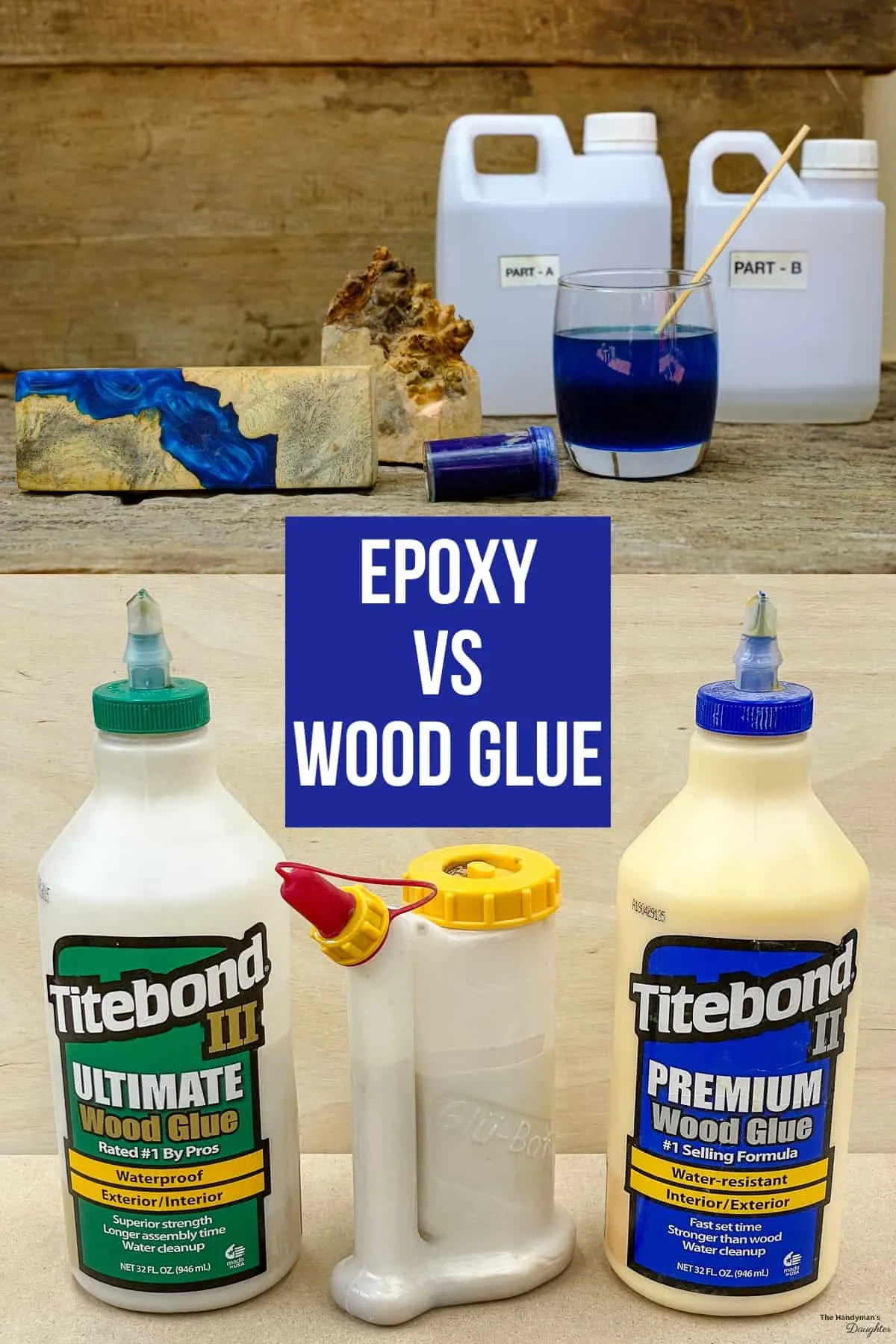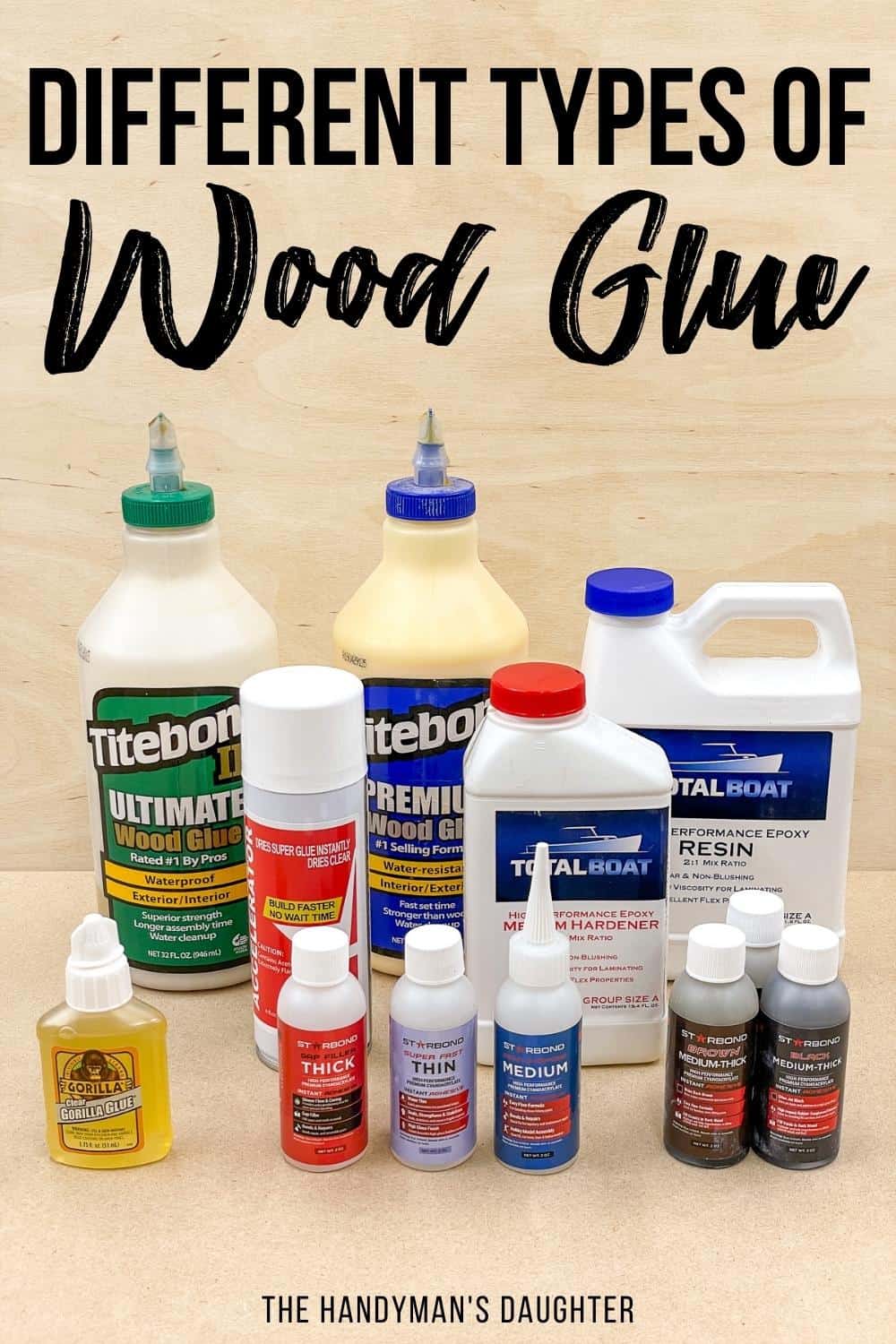Are you curious about what materials wood glue won’t stick to? Well, you’ve come to the right place! Wood glue is a fantastic adhesive for woodworking projects, but it doesn’t work its magic on every surface. Let’s dive into the intriguing world of wood glue and explore the materials that can resist its sticky embrace.
Wood glue, as its name suggests, is primarily designed for bonding wood pieces together. However, it’s important to know that wood glue doesn’t stick to just any surface. Despite its strong bonding power, there are certain materials that can remain unaffected by its sticky properties.
In this article, we’ll uncover the answer to the question, “What material does wood glue not stick to?” We’ll discuss various materials that can pose a challenge for wood glue and explore alternative adhesives for these surfaces. So, buckle up and get ready to embark on a fascinating journey through the world of woodworking adhesives!

What Materials Does Wood Glue Not Stick To?
Wood glue is a popular adhesive used in woodworking and carpentry projects. It provides a strong bond between pieces of wood, allowing for sturdy construction. However, there are certain materials that wood glue may not adhere well to. In this article, we will explore the materials that wood glue does not stick to and discuss alternative adhesives that may be better suited for these surfaces.
1. Non-Porous Materials
Wood glue is designed to penetrate porous materials, such as wood, and create a strong bond through the absorption and evaporation of water. Non-porous materials, on the other hand, do not allow for this absorption process and may not provide the necessary surface for the glue to adhere to. Examples of non-porous materials include glass, metal, and plastic.
When bonding non-porous materials, it is recommended to use adhesives specifically formulated for these surfaces. For glass, a cyanoacrylate adhesive, commonly known as super glue, can be used. Metal can be bonded using epoxy adhesives, which provide excellent strength and durability. Plastics often require special adhesives that are designed to bond these materials, such as polyurethane or epoxy-based adhesives.
2. Wet or Greasy Surfaces
For wood glue to effectively bond surfaces, it is important that the surfaces are clean and free from moisture or grease. Wet or greasy surfaces can interfere with the adhesion process and prevent a strong bond from forming. It is crucial to clean and dry the surfaces thoroughly before applying wood glue.
If you are working with wet or greasy surfaces, consider using an adhesive that is specifically designed for these conditions. For example, polyurethane-based adhesives are known for their ability to bond to damp surfaces, making them suitable for outdoor applications or projects involving wet wood.
3. Surfaces Treated with Certain Finishes
Wood glue may also struggle to adhere to surfaces treated with certain finishes. Finishes like polyurethane or varnish create a protective layer on the wood, which can prevent the glue from bonding effectively. In such cases, it is advisable to roughen the surface or remove the finish before applying wood glue.
Alternatively, there are woodworking adhesives available that are specifically designed to bond to finished surfaces. These adhesives contain additives that help to penetrate the finish and create a strong bond. However, it is important to note that these specialized adhesives may not be as readily available as standard wood glue.
4. High-Temperature Environments
Wood glue is not suitable for applications in high-temperature environments. Excessive heat can cause the glue to soften or break down, compromising the bond. If you are working on projects that will be exposed to high temperatures, it is recommended to use heat-resistant adhesives, such as epoxy or silicone adhesives.
It is crucial to consider the intended use and environmental conditions when selecting an adhesive. There are numerous alternative adhesives available that are designed for specific materials and conditions. It is always a good practice to consult the manufacturer’s recommendations and instructions before choosing an adhesive for your project.
5. Adhesives for Specific Materials
In addition to the materials mentioned above, certain materials like concrete, stone, and fabric may require specialized adhesives for the best results. Concrete and stone can be bonded using construction adhesives or epoxy-based adhesives. Fabrics, on the other hand, often require fabric glue or fabric adhesives that are formulated to withstand washing and provide a flexible bond.
It is important to research and choose the appropriate adhesive for each specific material to ensure a strong and long-lasting bond.
The Bottom Line
Wood glue is a versatile adhesive that is well-suited for bonding wood surfaces. However, there are certain materials that wood glue may not stick to effectively. By understanding the limitations of wood glue and exploring alternative adhesives, you can ensure successful bonding in a variety of applications. Whether you are working with non-porous materials, wet or greasy surfaces, treated surfaces, or high-temperature environments, there are adhesives available that are specifically designed to meet your needs. Always consider the specific requirements of your project and select the appropriate adhesive accordingly.
Key Takeaways:
- Wood glue does not stick well to non-porous surfaces like glass or plastic.
- It is not effective on oily or greasy surfaces, as the glue cannot adhere properly.
- Wood glue may not bond properly to wet or damp surfaces, as moisture interferes with the adhesive properties.
- Certain types of wood, such as teak or cedar, have natural oils that can prevent wood glue from sticking well.
- In general, wood glue is designed to bond with wood and may not adhere to other materials as effectively.
Frequently Asked Questions
In this section, we’ll answer some common questions related to wood glue and the materials it may not adhere well to.
What types of surfaces does wood glue not stick to?
While wood glue is an excellent adhesive for most woodworking projects, it may not stick well to certain surfaces. These include:
1. Plastic: Wood glue does not typically bond well with plastic materials due to their smooth, non-porous surfaces. For plastic-to-wood applications, it’s better to use an adhesive specifically designed for bonding plastic.
2. Glass: Similar to plastic, wood glue does not adhere to glass surfaces effectively. If you need to join wood and glass, consider using a different adhesive, such as epoxy or silicone-based glue.
Can wood glue be used on metal surfaces?
No, wood glue is generally not suitable for bonding metal surfaces. Wood glue is designed to penetrate porous materials (like wood) and form a strong bond. Metal surfaces, on the other hand, are typically smooth and non-absorbent, making it difficult for wood glue to adhere. For metal-to-wood applications, it’s best to use a more appropriate adhesive, such as epoxy or industrial-strength bonding agents specifically designed for metal.
Does wood glue work well on oily or greasy surfaces?
No, wood glue does not adhere well to oily or greasy surfaces. Oils and greases create a barrier that prevents the glue from bonding effectively. Before applying wood glue, make sure to clean the surfaces thoroughly to remove any dirt, oils, or grease. This will ensure a strong and lasting bond between the wood pieces.
Can wood glue be used to bond two different types of wood?
Yes, wood glue is ideal for bonding two different types of wood together. Whether you’re joining hardwood to softwood or different species of wood, wood glue provides a strong and durable bond. Just make sure to apply an even layer of glue on both surfaces, align the pieces correctly, and apply clamping pressure until the glue dries.
Does wood glue work on wet wood?
No, wood glue is not recommended for wet wood applications. The moisture in wet wood can prevent the glue from properly adhering, resulting in a weak bond. It’s important to allow the wood to dry thoroughly before applying wood glue. This will ensure the glue penetrates the porous fibers of the wood and creates a strong, long-lasting bond.

Does wood Glue stick to Silicone Mats
Summary
So, what did we learn about wood glue and the things it doesn’t stick to? Well, wood glue is fantastic for bonding wood surfaces together, but it doesn’t work well on certain materials like metal and plastic. These surfaces are too smooth and slippery for the glue to grab onto. However, if you’re working with fabric, ceramics, or even glass, wood glue can be a surprisingly good choice. Just remember to sand or roughen up the surface a bit to give the glue something to grip onto.
